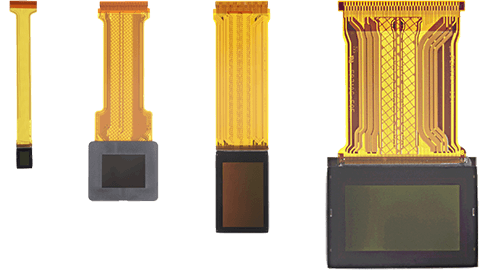Introduction: The Rise of Micro Display Technology
In an era where smaller, sharper, and more efficient displays are in constant demand, Micro OLED Display technology has emerged as a groundbreaking solution. These ultra-compact displays, often measuring less than an inch diagonally, are revolutionizing how we experience visual information across numerous applications. From augmented reality headsets to medical imaging devices, micro OLED displays deliver exceptional image quality in incredibly small form factors.
Unlike traditional OLED displays that share similar technology with smartphone screens, micro OLEDs (also known as OLED-on-silicon) are built directly onto silicon wafers using semiconductor manufacturing processes. This fundamental difference enables pixel densities and performance characteristics that conventional displays simply can’t match. As we examine this transformative technology, we’ll explore its unique advantages, current applications, and the exciting future it promises for visual display systems.
How Micro OLED Displays Work
The Silicon Backplane Advantage
At the heart of every micro OLED display lies its silicon backplane, which distinguishes it from conventional display technologies. This semiconductor foundation provides several critical benefits:
- Extremely high pixel density – With pixel pitches measured in single-digit microns, micro OLEDs achieve resolutions that would be impossible with glass substrates
- Superior electrical performance – The silicon base allows for faster switching speeds and more precise current control
- Integrated functionality – Additional circuits can be built directly into the backplane, reducing external component requirements
The OLED Emissive Layer
Built atop the silicon backplane, the OLED layer in micro displays functions similarly to larger OLED panels but with important refinements:
- Precision deposition – Organic materials are applied with atomic-level accuracy using advanced vapor deposition techniques
- Enhanced efficiency – Specialized material formulations maximize brightness while minimizing power consumption
- Longer lifespan – Improved encapsulation techniques protect the delicate organic layers from degradation
Micro-Optics Integration
Many micro OLED displays incorporate sophisticated optical elements directly into their package:
- Microlens arrays that boost light extraction efficiency
- Custom collimation optics for near-eye display applications
- Anti-reflective coatings that maintain contrast in bright environments
Applications Transforming Industries
Augmented and Virtual Reality
Micro OLED displays have become the gold standard for premium AR/VR devices, enabling:
- Ultra-high resolution – Current models achieve over 4000 pixels per inch
- Reduced motion blur – Fast response times critical for immersive experiences
- Compact form factors – Enabling sleek, comfortable headset designs
Leading AR companies now utilize micro OLEDs to create headsets with display capabilities rivaling high-end monitors, all in packages small enough to wear comfortably for extended periods.
Medical Imaging and Surgery
In medical applications, micro OLED technology provides:
- High-brightness displays visible in bright operating rooms
- Accurate color reproduction for diagnostic imaging
- Sterile, sealed units suitable for surgical environments
Modern surgical microscopes and endoscopes increasingly rely on micro OLED displays to give medical professionals the clearest possible view of procedures.
Military and Aerospace
Defense applications benefit from micro OLED’s unique advantages:
- Extreme environmental durability
- High contrast in sunlight
- Low power consumption for portable systems
From helmet-mounted displays to aircraft instrumentation, micro OLEDs provide critical visual information in demanding conditions.
Consumer Electronics
While currently limited to premium products, micro OLEDs are beginning to appear in:
- Digital camera viewfinders
- Compact projection systems
- Specialty monitoring devices
As manufacturing scales, we expect to see broader adoption across consumer products.

Technical Advantages Over Competing Technologies
Superior Image Quality
Micro OLED displays consistently outperform other micro display technologies in:
- Contrast ratios – True blacks with infinite contrast
- Color gamut – Covering over 90% of DCI-P3 space
- Viewing angles – Minimal color shift at extreme angles
Power Efficiency
The combination of emissive technology and silicon backplanes results in:
- Lower operating voltages
- Reduced power consumption per pixel
- Efficient light generation
These characteristics make micro OLEDs ideal for battery-powered devices.
Form Factor Flexibility
The compact nature of micro OLEDs enables:
- Thinner display stacks
- Curved or unconventional shapes
- Direct integration with optical systems
This flexibility opens new possibilities in product design.
Current Challenges and Limitations
While micro OLED technology offers numerous advantages, several challenges remain:
Manufacturing Complexity
Producing micro OLED displays requires:
- Specialized semiconductor fabrication facilities
- Precision alignment of multiple layers
- Stringent quality control measures
These factors currently limit production capacity and keep costs high.
Brightness Requirements
Some applications demand:
- Higher peak brightness for outdoor use
- Improved efficiency to manage heat
- Better performance in extreme temperatures
Ongoing material science research addresses these limitations.
Lifespan Considerations
While improving, micro OLEDs still face:
- Differential aging of color subpixels
- Organic material degradation over time
- Burn-in risks for static content
Manufacturers continue to develop solutions to these challenges.

The Future of Micro OLED Technology
Several exciting developments promise to expand micro OLED capabilities:
Higher Resolutions
Next-generation displays targeting:
- 6000+ PPI densities
- 8K-equivalent resolutions in compact sizes
- Improved pixel fill factors
Advanced Integration
Emerging approaches include:
- Direct bonding with optical waveguides
- Stacked pixel architectures
- Monolithic integration with sensors
New Materials and Structures
Research focuses on:
- Blue phosphorescent materials for improved efficiency
- Tandem OLED structures for higher brightness
- Quantum dot enhancements for wider color gamuts
Conclusion: A Bright Future for Micro Displays
Micro OLED technology represents a significant leap forward in display capabilities, offering unmatched image quality in incredibly compact form factors. As manufacturing processes mature and production scales, we expect to see these displays proliferate across an expanding range of applications.
The unique combination of semiconductor precision with organic light-emitting technology positions micro OLEDs as the display solution of choice for applications where quality, size, and efficiency are paramount. From transforming how we experience augmented reality to enabling new medical visualization tools, micro OLED displays are poised to play a central role in the next generation of visual technologies.
As research continues to address current limitations and explore new possibilities, the potential applications for micro OLED technology will only expand. The coming years will likely see these remarkable displays move from specialized applications to broader consumer markets, bringing their exceptional performance to an ever-wider audience.
